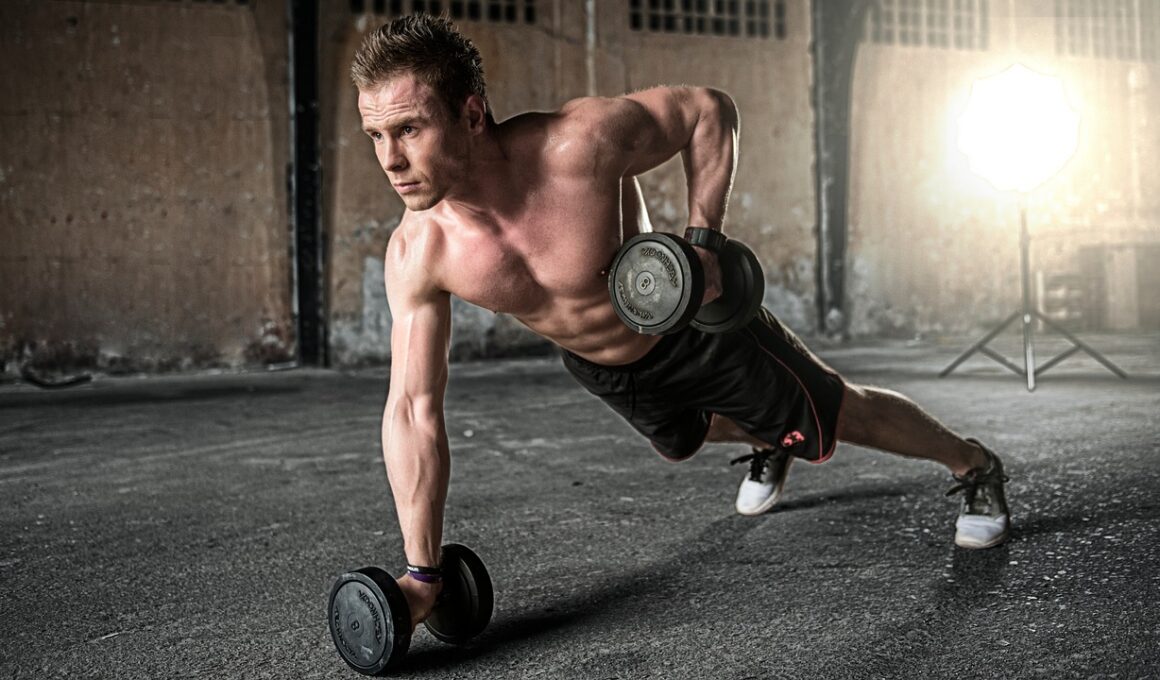Maximizing Gains with Bilateral Compound Lifts
Bilateral exercises, which involve using both limbs simultaneously, are essential in strength training. They are pivotal for building strength and increasing muscle mass effectively. For instance, exercises such as squats and deadlifts allow athletes to engage multiple muscle groups, maximizing the functional benefits. These lifts encourage greater activation of stabilizer muscles, contributing to overall body strength and coordination. Strength gains achieved through bilateral lifts tend to be more practical in real-world situations. Moreover, bilateral exercises often lift heavier weights, leading to a more considerable overload on muscles. This overload is crucial for hypertrophy, as it results in micro-trauma, triggering muscle repair and growth. Additionally, bilateral movements can improve balance and core stability, essential components in overall fitness. The efficiency of performing these exercises saves time as they target numerous muscle groups simultaneously. However, proper form and technique are vital to prevent injury and maximize effectiveness. Incorporating bilateral lifts into your routine ensures a solid foundation in strength training, providing a robust platform for accessory exercises. In summary, bilateral compound lifts are indispensable for anyone serious about maximizing their strength training performance.
When comparing unilateral and bilateral exercises, the advantages of bilateral lifts stand out. Unilateral exercises can help correct muscle imbalances, but they typically do not generate as much force. This force generation is critical in sports performance and functional strength. Bilateral lifts, such as bench presses and leg presses, allow for heavier weights, thus resulting in greater overall strength gains. The higher load actually leads to enhanced neuromuscular adaptation, necessary for progressing in a strength training regimen. Notably, as individuals advance in their training, they often experience plateaus. Integrating more bilateral exercises can be a highly effective strategy to break through these barriers. Additionally, athletes focusing on bilateral lifts may find improvements in their unilateral lift performance as well. The increased stability and strength from bilateral work translate well to unilateral lifts. Furthermore, some studies suggest that bilateral strength training can lead to superior overall muscle hypertrophy compared to unilateral training. This hypertrophic benefit makes bilateral exercises a cornerstone for anyone looking to develop strength and size. By balancing bilateral and unilateral movements, one can create a comprehensive training program that optimizes both strength and muscular development.
The Role of Compound Lifts
Compound lifts, which involve multiple joints and muscle groups, play a crucial role in both hypertrophy and functional strength. They are characterized by their ability to activate large amounts of muscle, leading to significant strength gains over time. Among the various compound lifts, the squat, deadlift, and bench press are particularly effective in strength training routines. These lifts not only promote muscle growth in targeted areas but also enhance overall movement patterns and functional capabilities. Engaging in compound lifts develops coordination, balance, and stability while encouraging muscle synergy. The interconnectedness of these movements fosters a holistic approach to strength training, making them advantageous for athletes and fitness enthusiasts alike. Furthermore, compound lifts promote hormonal responses that support muscle growth, such as increased testosterone and growth hormone levels. This hormonal boost is vital for recovery and muscle repair. They also improve metabolic rate due to increased muscle mass, contributing to enhanced fat loss during and after workouts. Implementing a regular regimen of compound lifts ensures sustained fitness development and aligns with long-term strength goals. Therefore, focusing on these exercises is essential for maximizing workout effectiveness.
Another key aspect to consider is the safety and efficiency of bilateral exercises. When done correctly, bilateral movements can be safer than their unilateral counterparts. Utilizing a barbell or machine for exercises like a bench press or squat can help stabilize the movement, preventing injuries. The safety of training in a bilateral manner often alleviates unnecessary strain on the joints, reducing the risk of overuse injuries. Additionally, many individuals find bilateral exercises easier to learn and perform, resulting in a lower barrier to entry for beginners. This accessibility contributes to improved adherence to training programs. Notably, having both limbs working together can often lead to better coordination and technique over time. However, it remains essential to maintain proper form, regardless of the weight utilized. Novices are encouraged to start with lighter weights or seek guidance from professionals to ensure they master the basic mechanics of these lifts effectively. Educating oneself about the correct execution of bilateral lifts can prevent injuries and promote a positive training experience. The emphasis on balance and control fosters increased athletic performance and overall physical health.
Benefits for Athletes
Bilateral lifts are particularly beneficial for athletes across various sports. The ability to perform explosive movements, such as sprinting or jumping, is enhanced through these compound movements. Strengthening the posterior chain, including the hamstrings and glutes, is vital for maintaining speed and agility. Athletes who focus on bilateral lifts often exhibit improved power output, translating into superior performance in their respective fields. Furthermore, training bilaterally allows athletes to generate more forceful contractions, which can support the demands of competitive sports. The increased strength and muscle mass built through these lifts assist in injury prevention, which is paramount in any athlete’s training regimen. Additionally, the enhanced core stability developed through bilateral exercises facilitates improved performance in sport-specific movements. By reinforcing the body’s ability to maintain proper alignment, athletes protect themselves against injuries. The contributions of compound lifts to overall athleticism cannot be overlooked; they serve as a critical component for anyone wishing to excel. Therefore, incorporating bilateral compound lifts into a training program is an effective strategy for athletes looking to enhance their performance and achieve greater success.
When creating a workout program that incorporates bilateral compound lifts, it is vital to consider several factors. First, beginner lifters should prioritize learning the correct form with lighter weights before progressing to heavier loads. Finding the right balance between intensity and volume is essential for building strength effectively. A well-rounded program may include a mix of bilateral exercises alongside unilateral movements, ensuring a comprehensive approach to strength training. Incorporating variety keeps workouts engaging and allows for balanced muscle development. Scheduling workouts efficiently is essential, with adequate recovery time between sessions targeting the same muscle groups. Including 48-72 hours of rest between strength sessions for the same area promotes optimal recovery and muscle growth. Nutrition also plays a crucial role in maximizing gains from bilateral exercises. Consuming adequate protein and maintaining a balanced diet are imperatives for muscle repair. Furthermore, monitoring progress regularly ensures that training stays aligned with personal goals. Adjustments to volume or intensity may be necessary as progress is made. Through a thoughtful and deliberate approach, leveraging bilateral compound lifts in strength training can lead to outstanding results.
Conclusion
In conclusion, maximizing gains with bilateral compound lifts is crucial for success in strength training. The efficiency, safety, and effectiveness of these exercises make them a favorable addition to any fitness regimen. Their significance in building strength, enhancing stability, and promoting overall athletic performance cannot be overstated. When combined with proper programming and nutrition, bilateral lifts yield significant results, contributing to muscle hypertrophy and improved functional strength. Furthermore, they prepare athletes to excel in their specific sports, as they develop essential movement patterns critical to performance. While the benefits of unilateral exercises are acknowledged, the importance of focusing on bilateral lifts should not be overlooked. For anyone striving to take their training to the next level, these compound movements serve as an invaluable tool. By integrating them thoughtfully into a well-developed workout routine, one can harness their power to enhance physical capabilities and reach new fitness milestones. Ultimately, establishing a balanced approach that emphasizes both bilateral and unilateral exercises ensures comprehensive and efficient muscle development. Therefore, commit to these lifts and watch as your strength gains propel you toward accomplishing your fitness goals.


